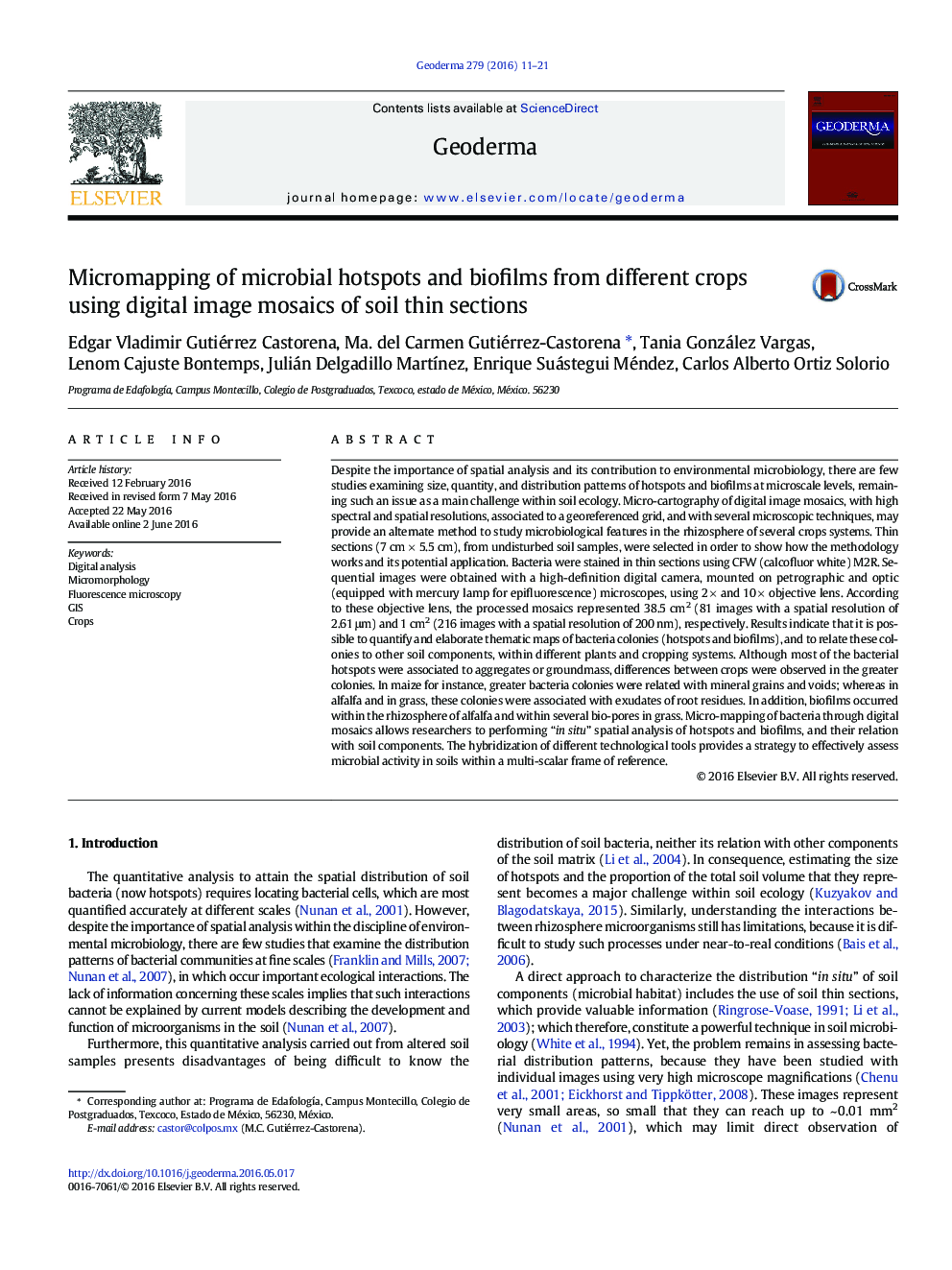| کد مقاله | کد نشریه | سال انتشار | مقاله انگلیسی | نسخه تمام متن |
|---|---|---|---|---|
| 6408305 | 1629438 | 2016 | 11 صفحه PDF | دانلود رایگان |
- Micro mappings from mosaics of high spectral and spatial resolutions
- Soil thin sections, fluorescent microscopy and cartographic tools
- Distribution patterns of hotspots and biofilms at microscale levels
- Microbiological features in the rhizosphere of several crops systems
Despite the importance of spatial analysis and its contribution to environmental microbiology, there are few studies examining size, quantity, and distribution patterns of hotspots and biofilms at microscale levels, remaining such an issue as a main challenge within soil ecology. Micro-cartography of digital image mosaics, with high spectral and spatial resolutions, associated to a georeferenced grid, and with several microscopic techniques, may provide an alternate method to study microbiological features in the rhizosphere of several crops systems. Thin sections (7 cm Ã 5.5 cm), from undisturbed soil samples, were selected in order to show how the methodology works and its potential application. Bacteria were stained in thin sections using CFW (calcofluor white) M2R. Sequential images were obtained with a high-definition digital camera, mounted on petrographic and optic (equipped with mercury lamp for epifluorescence) microscopes, using 2 à and 10 à objective lens. According to these objective lens, the processed mosaics represented 38.5 cm2 (81 images with a spatial resolution of 2.61 μm) and 1 cm2 (216 images with a spatial resolution of 200 nm), respectively. Results indicate that it is possible to quantify and elaborate thematic maps of bacteria colonies (hotspots and biofilms), and to relate these colonies to other soil components, within different plants and cropping systems. Although most of the bacterial hotspots were associated to aggregates or groundmass, differences between crops were observed in the greater colonies. In maize for instance, greater bacteria colonies were related with mineral grains and voids; whereas in alfalfa and in grass, these colonies were associated with exudates of root residues. In addition, biofilms occurred within the rhizosphere of alfalfa and within several bio-pores in grass. Micro-mapping of bacteria through digital mosaics allows researchers to performing “in situ” spatial analysis of hotspots and biofilms, and their relation with soil components. The hybridization of different technological tools provides a strategy to effectively assess microbial activity in soils within a multi-scalar frame of reference.
Journal: Geoderma - Volume 279, 1 October 2016, Pages 11-21
